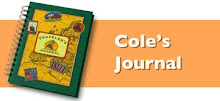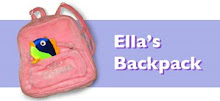
From Malcelsine we headed further north into the Italian Alps. Along the way we made a stop in Bolzano to see Otzi the Iceman. Otzi was discovered by German tourists, buried in the ice, in the Otz Valley near Bolzano. They thought he was lost hiker, but upon uncovering his hatchet, realized he had been there awhile. Several countries did independent studies and concluded that Otzi was a mere 5,300 years old. Also preserved in the ice were his clothes, coonskin cap, contents of his stomach, lice on his head, bow & arrows, and other gear. No cameras are allowed in the museum, so if you want to see Otzi simply follow this link. http://en.wikipedia.org/wiki/Ötzi_the_Iceman
Back on the road we arrived in Castelrotto, a little town high in the mountains, dwarfed by the Dolomite peaks. Our apartment was in a little chalet, on a farm called Goldrainerhof. Our hosts spoke no English but luckily one of the other German families staying there spoke English and did some translating. In this part of Italy, schools teach, TV is broadcast, and newspapers are written in German. While most residents can speak Italian, English is hard to come by.
During World War I, major battles were fought high in the Alps for which control of this region was a major objective. By losing the war, Austria’s South Tirol became Italy’s Alto Adige. Mussolini tried to quickly Italianize the region, banning all German references, but fought much resistance. Residents thought Hitler would come to their aide and liberate them, but since he was closely aligned with Musolini, it never happened. Finally in 1939 Musolini gave residents a final choice; move north to become German citizens, or stay put under Italian rule. About 85% made the decision to leave, but with World War II just beginning, only about 1/3 of those actually made it out. After the war and much debate, German and Italian were both made official languages and today each town has two names (our town was Castelrotto in Italian and Kastelruth in German). This area also enjoys more local control over such things as schools, roads, and utilities than any other region in Italy.
Today the tourists here come for one thing it seems…hiking (or skiing depending on the season). The area is littered with ski lifts shuttling hikers every which direction. Each year they host a World Cup skiing event and even hosted the Olympics in 1956. Our first day out had us riding the cable car up to Alpe di Siusi, the largest alpine meadow in Europe (8 miles x 20 miles and up to 6500 feet high). While we rode to the top, we hiked down and managed to get a little lost, but that just adds to the adventure. We also headed up to the Pordoi Pass, taking the cable car there to a peak of almost 10,000 feet. It was a beautiful sunny day in the valley, but very cold and windy at the top. The kids spent most of their time huddled in the shelter with hot chocolate while I tried to grip my camera out on the ledge.
Back at the farm we were lucky to have another German family staying with two kids. The parents spoke English but the kids did not. It was so funny watching them teach Cole to count to 10 in German. Since they already knew 1 to 10 in English, Cole returned the favor by teaching them in Italian. While the kids did there own translating, the parents gave Angie and I a tasting of all the German meats they had brought with them. We also got our fill of meats at the breakfast provided each morning. I just can’t get used to a plate of cold cuts that early in the morning. To make up for all the meats though, they also served fresh milk and homemade yogurt.
The clock tower in Castelrotto.
 Our chalet in the mountains.
Our chalet in the mountains.








 Winding our way out of the mountains (and I do mean winding), I think between our 2nd and 3rd mountain pass, we stumbled upon a group of mountain goats and a lone donkey clogging up the road.
Winding our way out of the mountains (and I do mean winding), I think between our 2nd and 3rd mountain pass, we stumbled upon a group of mountain goats and a lone donkey clogging up the road.
 Too much fresh mountain air.
Too much fresh mountain air.






















































